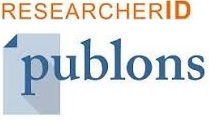Urban Youth Perspectives On Media Literacy And Environmental Awareness
Abstract
Human life today cannot be separated from the development of technology which continues to grow rapidly. The existence of technology will affect the community and the environment around it and technology can also help many things, especially in the field of literacy. Technology can also affect people's lifestyles, both from rural communities and urban communities. With easy access to technology, teenagers can use technology for their needs. This event was the background for this research. The purpose of this study is to determine the relationship between media literacy and environmental attitudes in urban adolescents. This research method uses literature study and analyzes using relevant literature sources. The result of this study is that media literacy includes more than just the ability to obtain and understand information; it also involves utilizing information to incite beneficial transformations in behavior and attitudes towards the environment.
Keywords
Full Text:
PDFReferences
Aurélio, L., França, S., Sequeira, V., Boaventura, D., Correia, M. J., Pinto, B., Amoroso, S., Feio, M. J., Brito, C., Chainho, P., & Chaves, L. (2021). Tell a Story to Save a River: Assessing the Impact of Using a Children’s Book in the Classroom as a Tool to Promote Environmental Awareness. Frontiers in Marine Science, 8. https://doi.org/10.3389/fmars.2021.699122
Austin, E. W., Austin, B. W., Power, T. G., Parker, L., Kaiser, C. K., & Edwards, Z. (2024). Youth Perspectives on the Effects of a Family-centered Media Literacy Intervention to Encourage Healthier Eating. Health Communication, 39(1), 122–135. https://doi.org/10.1080/10410236.2022.2160078
Bekoum Essokolo, V.-L., & Robinot, E. (2022). «Let’s Go Deep into the Game to Save Our Planet!» How an Immersive and Educational Video Game Reduces Psychological Distance and Raises Awareness. Sustainability, 14(10), 5774. https://doi.org/10.3390/su14105774
Contreras, C., Rivas, J., Franco, R., Gómez-Plata, M., & Luengo-Kanacri, B. P. (2023). Digital media use on school civic engagement: A parallel mediation model. Comunicar, 31(75), 91–102. https://doi.org/10.3916/C75-2023-07
Gallay, E., Pykett, A., & Flanagan, C. (2021). “We Make Our Community”: Youth Forging Environmental Identities in Urban Landscapes. Sustainability, 13(14), 7736. https://doi.org/10.3390/su13147736
Hamid, S., Ijab, M. T., Sulaiman, H., Md. Anwar, R., & Norman, A. A. (2017). Social media for environmental sustainability awareness in higher education. International Journal of Sustainability in Higher Education, 18(4), 474–491. https://doi.org/10.1108/IJSHE-01-2015-0010
Harris, C. B., Oliveira, A. W., Levy, B. L. M., Berkowitz, A. R., & Bowser, C. (2023). The eel connection: Developing urban adolescents’ sense of place through outdoor interactions with a local organism. The Journal of Environmental Education, 54(4), 241–264. https://doi.org/10.1080/00958964.2023.2216160
Keith, R. J., Given, L. M., Martin, J. M., & Hochuli, D. F. (2021). Urban children’s connections to nature and environmental behaviors differ with age and gender. PLOS ONE, 16(7), e0255421. https://doi.org/10.1371/journal.pone.0255421
Keith, R. J., Given, L. M., Martin, J. M., & Hochuli, D. F. (2022). Urban children and adolescents’ perspectives on the importance of nature. Environmental Education Research, 28(10), 1547–1563. https://doi.org/10.1080/13504622.2022.2080810
Korotayev, A., Romanov, D., Zinkina, J., & Slav, M. (2023). Urban Youth and Terrorism: A Quantitative Analysis (Are Youth Bulges Relevant Anymore?). Political Studies Review, 21(3), 548–572. https://doi.org/10.1177/14789299221075908
López, A. (2023). Seeing microplastic clouds: Using ecomedia literacy for digital technology in environmental education. The Journal of Environmental Education, 54(1), 46–57. https://doi.org/10.1080/00958964.2022.2152412
Moreno, M. A., Binger, K., Zhao, Q., Eickhoff, J., Minich, M., & Uhls, Y. T. (2022). Digital Technology and Media Use by Adolescents: Latent Class Analysis. JMIR Pediatrics and Parenting, 5(2), e35540. https://doi.org/10.2196/35540
Neidig, J., Anguelovski, I., Lliso, B., & Pascual, U. (2023). Pluralizing environmental values for urban planning: How to uncover the diversity of imaginaries about socio‐natures from Vitoria‐Gasteiz (Basque Country, Spain). People and Nature, 5(4), 1262–1283. https://doi.org/10.1002/pan3.10506
Oguafor, I. V., & Nevzat, R. (2023). “We are captives to digital media surveillance” Netizens awareness and perception of social media surveillance. Information Development, 026666692311716. https://doi.org/10.1177/02666669231171641
Rice, R. E., & Miller, L. B. (2023). Media Use, Environmental Mediators, and Pro-environmental Behaviors across and within Countries. Environmental Communication, 17(2), 187–208. https://doi.org/10.1080/17524032.2023.2179649
Samy-Tayie, S., Tejedor, S., & Pulido, C. (2023). News literacy and online news between Egyptian and Spanish youth: Fake news, hate speech and trust in the media. Comunicar, 31(74), 73–87. https://doi.org/10.3916/C74-2023-06
Sánchez-Reina, J.-R., & González-Lara, E.-F. (2022). The COVID-19 infodemic among young people and adults: The support of critical media literacy. Comunicar, 30(73), 71–81. https://doi.org/10.3916/C73-2022-06
Sprague, N. L., Zonnevylle, H. M., Jackson Hall, L., Williams, R., Dains, H., Liang, D., & Ekenga, C. C. (2023). Environmental health perceptions of urban youth from low‐income communities: A qualitative photovoice study and framework. Health Expectations, 26(5), 1832–1842. https://doi.org/10.1111/hex.13776
Taba, M., Allen, T. B., Caldwell, P. H. Y., Skinner, S. R., Kang, M., McCaffery, K., & Scott, K. M. (2022). Adolescents’ self-efficacy and digital health literacy: a cross-sectional mixed methods study. BMC Public Health, 22(1), 1223. https://doi.org/10.1186/s12889-022-13599-7
Thompson, R., Fisher, H. L., Dewa, L. H., Hussain, T., Kabba, Z., & Toledano, M. B. (2022). Adolescents’ thoughts and feelings about the local and global environment: a qualitative interview study. Child and Adolescent Mental Health, 27(1), 4–13. https://doi.org/10.1111/camh.12520
Wang, D., Shinde, S., Drysdale, R., Vandormael, A., Tadesse, A. W., Sherfi, H., Tinkasimile, A., Mwanyika‐Sando, M., Moshabela, M., Bärnighausen, T., Sharma, D., & Fawzi, W. W. (2023). Access to digital media and devices among adolescents in sub‐Saharan Africa: A multicountry, school‐based survey. Maternal & Child Nutrition. https://doi.org/10.1111/mcn.13462
Young, S., Hooyer, K., & Merrill, J. (2023). Growing Qualitative Research Capacity in an Academic Medical Center. Qualitative Research, 4043. https://doi.org/10.1370/afm.21.s1.4043
DOI: http://dx.doi.org/10.52155/ijpsat.v45.1.6315
Refbacks
- There are currently no refbacks.
Copyright (c) 2024 Ernawati Maulana

This work is licensed under a Creative Commons Attribution 4.0 International License.



















